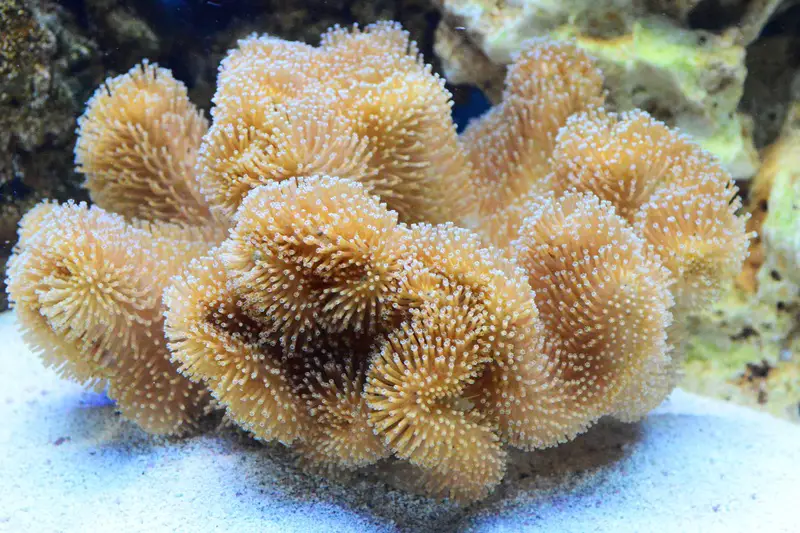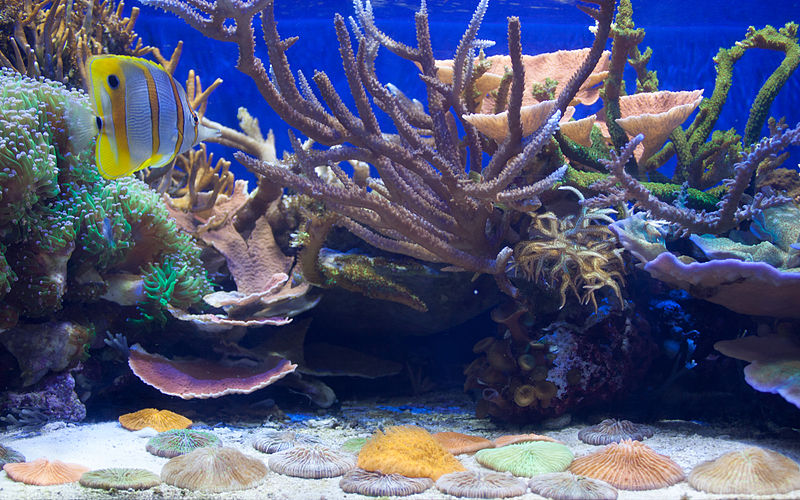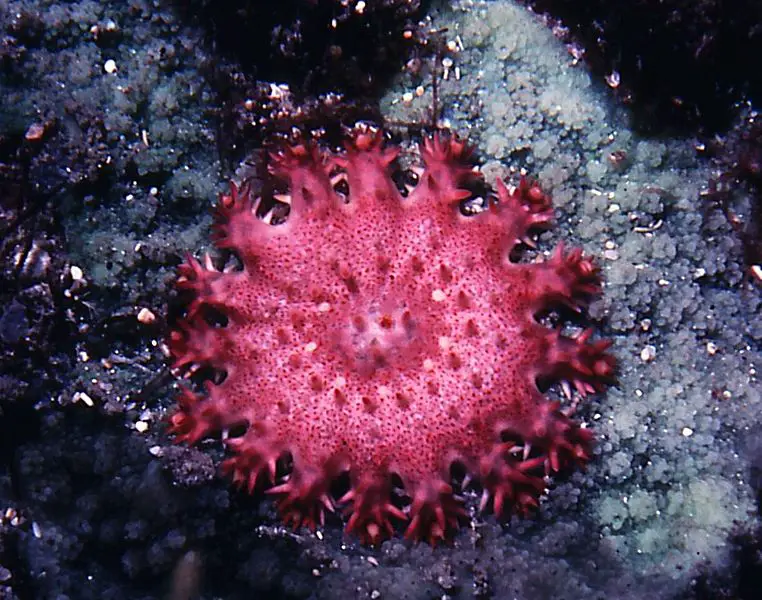The Toadstool Leather Coral is a pretty hardy species, resilient against several factors. However, they can “sulk” for a week or more if they’re touched or experience a change in their environment.
Learning to tell the difference between normal and abnormal coral behaviors is crucial in determining the health of your coral. If your coral is dying, it’s most likely due to water conditions or an underlying disease.
Continue reading to determine how to tell if your Toadstool Leather is dying, why this happens, and the best way to care for this coral species.
How Do I Know If My Toadstool Coral Is Dying?
Common signs that your Toadstool Leather Coral is dying include rotting flesh, significant discoloration, missing chunks, a withered stalk, or a detachment from the base.
If the flesh of your Leather coral is dying, it will often present as flaky or powdery with a softened or crumbling texture. Wrinkly or shriveled skin is also a sign that the health of your coral is deteriorating.
Some Toadstool leathers have a quick death, while others slowly shrink over time. If your toadstool coral is dying, it will often admit a rotting smell, which indicates its deteriorating health.
Why Is My Toadstool Leather Coral Dying?
Toadstool Leather is the perfect coral to introduce to even a simple aquarium setup. These hardy invertebrates can survive in various underwater ecosystems, but for them to thrive, check out their optimum conditions in the table below.
| LightingLow to Moderate – 50 to 150 PAR Toadstool corals will always grow towards the light. If they are overshadowed, they can extend their stalks, which means they can grow at any level of the reef. But, keep in mind that these corals can grow up to two feet across, so you’ll need to allow adequate space in your tank. | |
| Flow Rate | Moderate to High In general, you can’t go too high with the flow, but you can go too low, so always opt for a stronger flow if you have the choice. The stalks will adapt to the water flow, but try moving them to a different position if it’s getting bent out by the water. |
| Optimum Temperature Range | 76 to 82 degrees Fahrenheit |
| Optimum pH Range | 8.0 to 8.4 |
| Optimum Salinity | 1.025 or 35 PPT |
| Alkalinity | 8 to 12 dKH |
| Calcium Level | 350 to 450 PPM |
| Magnesium Level | 1250 to 1350 PPM |
These corals are among the most beginner-friendly options, but they still require a little maintenance.
One of the most significant care factors is to provide adequate space for each separate coral. As their growth can be unpredictable, it’s good to place them into the tank before adding any other corals to see how they adapt and shape to the lighting and water flow.
Another primary concern is when one coral becomes stressed or ill. In this circumstance, they release a harmful toxin to the other corals in the aquarium. For this reason, it’s imperative that you can recognize the signs of a dying toadstool leather and act quickly to remove any toxins from your water.
Why Is My Toadstool Coral Not Opening?
Corals do not appreciate being touched or moved; even the slightest aggravation can cause them to close up for several days.
It’s normal for a coral to shrink or deflate after being touched by something (such as a fish or snail) or following a periodic event (such as photoperiod or reproduction)
If your coral has closed due to these circumstances, you should see it return to its standard size and shape reasonably quickly.
However, if the deflation is abnormal, its cause is more traumatic and could have more impactful consequences. For example, an injury or chemical mishap could result in a permanent shape deformation or even death if the issue is not rectified.
There are often subtle differences between a normal and abnormal closing, though these can be difficult to spot. One sign is the appearance of the skin. During a “normal” closing, your coral retains its fluid levels – although the skin may sag, it should not appear loose.
If the skin wrinkles and appears loose as though it has lost some of its fluids, it may signify that your coral has experienced a trauma.
Why Is My Leather Coral Turning Brown?
You need to act immediately if you notice a brown, jelly-like covering on your coral. This is most likely a sign of brown jelly disease, a severe affliction that can damage your coral if you don’t treat it.
Brown jelly is not actually a disease, but a symptom of an underlying injury or condition. The cause of this could be a bacterial infection, unwanted handling, or a change in environment.
It’s essential to act quickly in this circumstance because brown jelly disease can kill a coral in a matter of days – and it can also affect the other corals in your aquarium.
If your brown jelly has a small, localized patch of brown jelly, try increasing the water flow in the aquarium and see if it goes away. When you increase the flow, you allow your coral to absorb more oxygen and nutrients, improving their overall health.
Increased water flow also prevents the water from becoming stagnant and helps prevent a build-up of brown jelly on your coral.
If your coral still shows signs of brown jelly disease, you may need to “frag” or remove the infected part of the coral if you want it to survive. This is not an ideal method, but maybe your only option if the toadstool leather has a severe case of brown jelly.
Another method is to use an iodine dip; these are good for treating various coral illnesses. Finally, a UV light will not fight against brown jelly, but it is a helpful preventative for reducing the risk of your coral contracting brown jelly in the first place. If you have healthy corals, this may be a good investment.
Is It Normal For My Leather Coral To Change Color?
Leather corals possess the unique ability to shed, so you may notice that it changes color every one to two months as it prepares. It may also retract its tentacles for a couple of days during this time. This process is a natural way for the leather coral to shed the waste and keep algae off.
Over the next few days, you’ll see a shiny layer appear on the top of the coral, which will shed in the tank. This can get stuck onto other corals or rocks, but don’t worry; it won’t harm them. When the process is complete, your coral will appear brighter than before.
While a moderate color change could signify that your coral is preparing to shed, a significant difference in its color could indicate that something is wrong. If you suspect that there could be a problem with your coral, the first thing to do is check the water.
Final Thoughts.
Common signs that your Toadstool Leather Coral is dying include a shriveled and “loose” skin, a severe change in color (particularly a layer of brown jelly-like material), or a significant behavioral change (such as refusing to open after more than one or two days).
One of the easiest fixes is to check your water conditions and increase the flow. If this doesn’t work, you may be looking at an underlying disease that needs further treatment.



